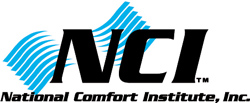
This industry is riddled with so many myths. Here is my attempt at debunking seven of the most common ones.
When it comes to the HVAC Industry from a consumer’s perspective, there seems to be a lot of misinformation about how to manage and maintain comfort systems. These tidbits of misinformation come disguised as “truth” when actually they are more like myths and urban legends.
The problem is that a lot of contractors out there actually perpetuate these myths by either ignoring them when customers bring them up, or agreeing with them, or not knowing if they are true or not.

Many HVAC contractors inadvertently perpetuate myths and urban legends regarding comfort systems by either ignoring them when customers bring them up, or agreeing with them. This is a problem.
For those who are truly focused on helping customers attain the comfort and safety they desire and deserve, these myths are both a problem and an opportunity. The problem is obvious — they are exactly as labelled — myths. Unfortunately, they are believable enough to pass as truth and people remember them that way.
You have a chance to educate your customers, prove the myths are simply fairy tales, and then help them get what they want for the money the are willing to spend.
I like to think of that as being a hero.
So, what are some of the most common myths out there and what is the truth behind them? In no particular order, here are seven myths that plague the HVAC Industry:
MYTH 1: It’s a waste of time and money to service your air conditioner
Really? How many times have you heard people say that? I hear this a lot in my social circles and people are always put off when I respond by saying, “Is it also a waste of time and money to service your car?” You see, many people don’t think an air conditioning system is as complicated as a car. Just as a car requires maintenance and tune-ups, so does an air conditioning system.
We all know that regular cleaning helps keep q unit running smoothly and efficiently. It also provides an opportunity to catch problems that might have developed over the winter. Ignoring regular maintenance can mean an emergency call on a weekend afternoon—with the extra charge that comes with it.
MYTH 2: Consumers save money by adjusting the thermostat to keep the system from running when they leave, then turning it on when they get home
This is one of the most repeated myths out there. Yet it is untrue on both counts. When a consumer comes home to a hot house, the air conditioner has to work much harder to cool the place down. Turning the thermostat lower won’t help—an AC unit can only put out so much cooling, so a lower setting simply forces it to run longer.
Ignoring regular maintenance can mean an emergency call on a weekend afternoon—with the extra charge that comes with it.
MYTH 3: Closing vents and registers reduces your heating bill
This may be the most perpetuated myth out there. Most Performance-Based Contractors will tell you that if you have a modern forced air heating system, the pressure load is balanced throughout the house. Blocking a vent impacts how the HVAC system “inhales” and “exhales” air; it can throw the system out of balance, causing it to have to work harder or possibly break down.
By the way — a best practice for getting the most energy efficiency is to have heat or air-conditioned air evenly distributed throughout the house. Blocking vents in certain rooms will make those rooms hotter (or colder). During winter, heated air moves to cooler air. This typically means colder rooms tend to draw heat from other rooms, making the whole house feel colder and causing you to raise the thermostat.
MYTH 4: Buying a high energy efficient furnace or air-conditioner automatically reduces energy bills
Though not 100% false, this is a myth because most consumers believe it is completely true. It’s important to remember that furnaces and air conditioner efficiency ratings are determined in laboratory conditions, not the real world. There are many things that can impact the efficiency — leaky or damaged duct work, using the wrong type of filters, improperly sized and/or installed units, to just name a few. According to the Department of Energy, this can waste as much as one-third of a home’s energy consumption.
MYTH 5: Duct tape is good for sealing ducts
I love this one. The fact is that duct tapes has many great uses. Sealing duct work is not one of them. It doesn’t bond to metal well in dirty or dusty conditions. By the way, as is the case with most sticky tapes, as it ages, the adhesive tends to dry out and causes the tape to fall off. That is not so good, right?
Mastic or mastic tape is a better option for sealing duct work. It sticks and seals much better than duct tape.
Duct tape has many great uses. Sealing duct work well is not one of them.
 MYTH 6: The higher you set your thermostat, the faster your furnace will heat up your house
MYTH 6: The higher you set your thermostat, the faster your furnace will heat up your house
Believe it or not, my wife thinks this. Unfortunately, it is false. Furnaces deliver heat at the same rate no matter how high the thermostat setting. Turning it up uses more energy and that will make the condition space too warm. Then the consumer has to turn it down anyway and more energy wasted.
The same applies to air conditioning. Setting the air conditioning at full-blast just makes the space colder, makes the system work harder, and uses more energy.
MYTH 7: Energy efficiency doesn’t appeal to home buyers and doesn’t enhance a home’s future sales price of the home
Not according to the National Association of Home Builders who is actively supporting programs such as the use of ENERGY STAR heaters, air conditioners and appliances, as well as its own Green Building Guidelines. A 2008 NAHB study shows that 51 percent of home buyers would pay up to $11,000 more if energy costs drop by just $1,000 annually.
The Last Word on Myths
As Mark Twain once said, “It ain’t what you don’t know that gets you into trouble. It’s what you know for sure that just ain’t so (… that gets you into trouble).”
Our industry is constantly hit hard with complaints that range from inept contractors to outright fraudulent ones. The latter creates and even perpetuates myths and misconceptions that result in inaccurate information, convenient half-truths, and just plain lies that consumers accept as fact.
As an industry we need to be ever-vigilant against this, which is why I gathered and tried to address the seven written here.
If you know other myths beyond these, please share them here in the comments area. I’d love to share them with the rest of the industry.







Leave a Reply
You must be logged in to post a comment.